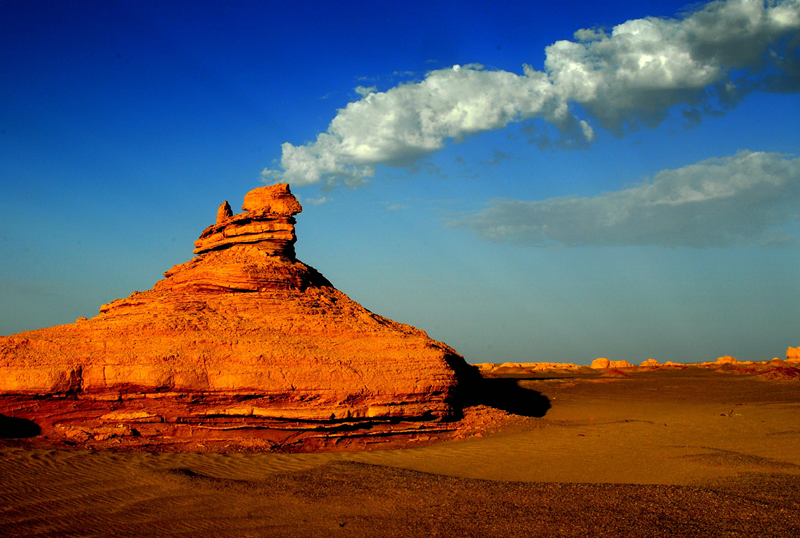Dunhuang Yardang National Geopark

Dunhuang Yardang National Geopark [Photo/jiuquan.gov.cn]
Dunhuang Yardang National Geopark is situated in the northwest of Yumen Pass in Gansu province. It extends 25 kilometers from east to west and 18 kilometers from north to south, with a total area of more than 400 square kilometers.
The park is well-known for its Yardang landscape, which is a typical wind erosion landform. In November 2001, the Ministry of Land and Resources, the predecessor of the Ministry of Natural Resources, approved the establishment of Dunhuang Yardang National Geopark.
There are various landforms of distinct shapes in the park, and many famous buildings around the world can find their epitome here, such as the Temple of Heaven in Beijing, the Potala Palace in Tibet, the Pyramids, and the Sphinx in Egypt.
The Yardang landforms in Dunhuang are the largest in the Yardang landform community, boasting the most mature geological morphology and the most ornamental value found in the world so far.
There are two important factors in the formation of the Yardang landforms. First is the geological basis for developing this landform, that is, there must be lake sedimentary strata; Second is external force erosion, that is, strong directional wind erosion and running water erosion in a desert. Under long-term wind erosion, the lower part of the hill often suffers from strong denudation and gradually forms a concave shape. If the rock stratum on the upper part of the hill is loose, it will easily collapse to form steep walls and a Yardang landform under the force of gravity.
Yardang landforms can be found in many arid areas around the world, including the Turkestan Desert and Mojave Desert. According to records, China's Yardang landforms cover an area of more than 20,000 square kilometers, and are mainly distributed in the northwest of the Qaidam Basin in Qinghai, the middle and lower reaches of Shule River in Gansu, and around Lop Nur in the Xinjiang Uygur autonomous region.





 Print
Print Mail
Mail
